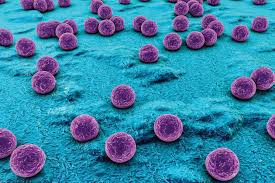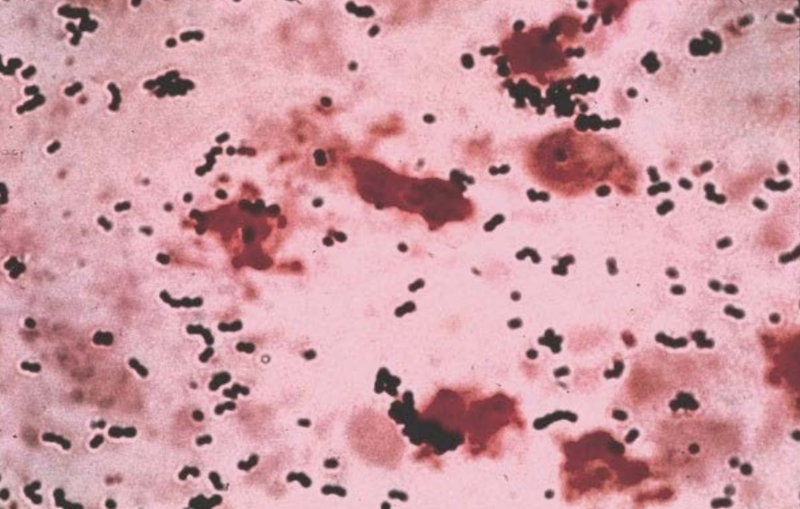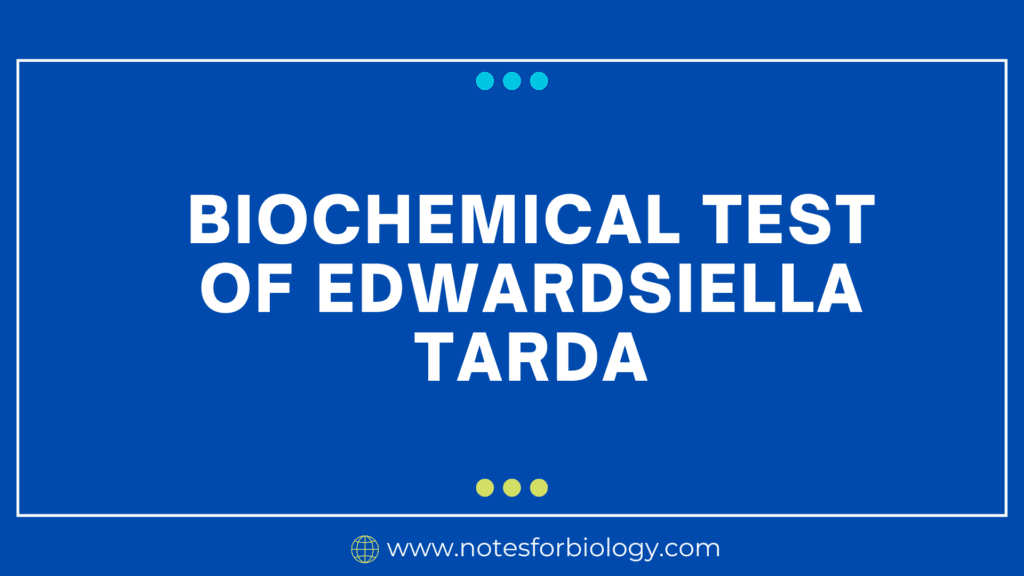CAMP test

The CAMP (Christie, Atkins, Munch-Petersen) test is a microbiological procedure used to differentiate between two closely related bacterial species: Streptococcus agalactiae (Group B Streptococcus) and Streptococcus dysgalactiae. Both species are commonly found in the human gut, and S. agalactiae can be a significant pathogen, particularly for newborns and pregnant women.
Table of Contents
Understanding the Principle
The CAMP test hinges on the synergistic interaction between two bacterial factors: the CAMP factor produced by S. agalactiae and a hemolytic factor produced by a specific strain of Staphylococcus aureus.

Here’s how it works
CAMP Factor: S. agalactiae produces a potent hemolysin known as the CAMP factor. This factor is a protein that can disrupt red blood cells, leading to hemolysis (the breakdown of red blood cells).
Hemolytic Factor: The selected strain of Staphylococcus aureus (usually S. aureus ATCC 19615) produces another hemolytic factor. This factor alone is not as potent as the CAMP factor.
Synergy: When both factors are present, they work together in a synergistic manner. The CAMP factor creates a zone of enhanced hemolysis that is wider and more distinct than the hemolysis caused by either factor alone.
Requirements for the CAMP Test
To perform the CAMP test, you need the following materials:
Bacterial cultures: A pure culture of the suspected Streptococcus species and a pure culture of the S. aureus ATCC 19615 strain.
Blood agar plates: These plates contain a specific type of blood, typically sheep’s blood, which is required for hemolysis to occur.
Sterile inoculating loop: This tool is used to streak the bacterial cultures onto the agar plates.
Incubation equipment: An incubator capable of maintaining a temperature of 37°C.
Procedure
Preparation
Prepare a sterile blood agar plate.
Streak a pure culture of S. aureus ATCC 19615 in a straight line across the center of the plate.
Allow the streak to dry.
Inoculation
Streak a pure culture of the suspected Streptococcus species perpendicular to the S. aureus streak, creating a “T” shape.
Do not allow the two streaks to touch.
Incubation
Incubate the plate at 37°C for 18-24 hours in an aerobic atmosphere.
Result Interpretation
After incubation, observe the plate carefully for any zones of hemolysis. Here’s how to interpret the results:
Positive CAMP Test
If the suspected Streptococcus species is S. agalactiae, a distinct, arrowhead-shaped zone of enhanced hemolysis will be observed at the junction of the two streaks. This is due to the synergistic action of the CAMP factor and the S. aureus hemolysin.
Negative CAMP Test
If the suspected Streptococcus species is not S. agalactiae, no arrowhead-shaped zone of enhanced hemolysis will be present at the junction of the two streaks. The hemolytic zone around the S. aureus streak will be the same width as it was before inoculation.
Important Considerations
Control Strains: Always include known positive and negative control strains in the CAMP test. This ensures that the test is working correctly and that the observed results are reliable.
Culture Purity: It is essential to use pure cultures of both bacterial species for accurate results. Contamination can lead to false-positive or false-negative reactions.
Incubation Conditions: Consistent incubation conditions are crucial. The recommended temperature and duration are essential for optimal results.
Plate Quality: The quality of the blood agar plates is important. Use fresh plates and ensure that the blood is of high quality.
Conclusion
The CAMP test is a simple, reliable, and cost-effective method for differentiating between S. agalactiae and S. dysgalactiae. It is a valuable tool for clinical microbiology laboratories and plays a vital role in the diagnosis of infections caused by Group B Streptococcus.

Frequently Asked Questions(FAQ)
What is CAMP test?
The CAMP (Christie, Atkins, Munch-Petersen) test is a microbiological procedure used to differentiate between two closely related bacterial species: Streptococcus agalactiae (Group B Streptococcus) and Streptococcus dysgalactiae.
What is Synergy?
A synergistic relationship or cooperative effort results in a whole that is more powerful than the sum of its individual components. The Attic Greek word συvεργία synergia, from synergos, συνεργός, meaning “working together,” is where the word synergy originates. Emergence and synergy share conceptual similarities.
Related Articles




